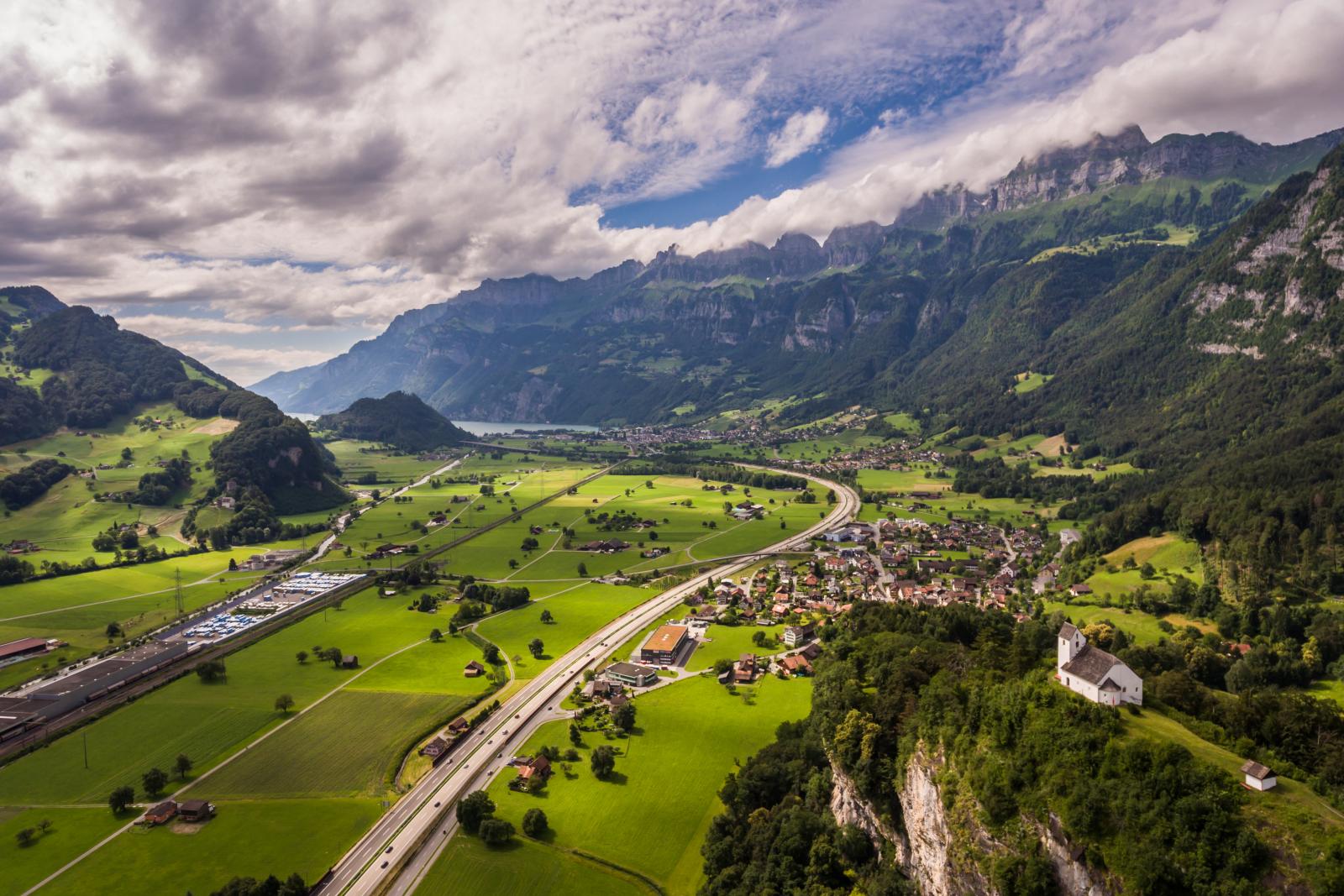Walenstadt: the energy island (part of Grid2050)

Walenstadt lies at the end of the Walensee lake near Liechtenstein, in a narrow mountain valley where it enjoys an abundance of renewable energy from three hydro power plants as well as photovoltaic generators. Besides 5,000 households, it is also home to a hospital and other essential infrastructure, positioning it as a microcosm of the country’s energy system for both supply and demand and the perfect place to kick-start our Grid2050 initiative.
The Walenstadt municipality sees an economic opportunity to profit from their natural resources, selling electricity oversupply to the national grid, and to build their resilience to natural disasters as well as economic shocks (such as changing energy prices).
We see a learning opportunity to explore pressing questions in designing fully automated energy systems that incorporate renewables. Since these intermittent energy sources introduce uncertainty, ingenious solutions are needed to ensure that future energy supply is not only sustainable, but robust and reliable. In this emerging research field, there are many directions to explore.
- How can we create and maintain a sustainable power grid, with the facility to store power against future need and trade it externally?
- What can we learn about power distribution rates, usage and flexibility needs?
- What solutions can we explore for anticipated challenges?
- What unforeseen issues may arise?
What makes Walenstadt so interesting is that it already has a high density of innovation. The town is actively transforming its energy supply, with newly built hydropower facilities, and it is preparing to replace external energy sources with more environmentally friendly options. All of this means that there is a pressing need to investigate how the entire local energy market (supply, demand and interaction) can be better managed, to accommodate the completely different nature of renewables compared with classical electromechanical power generation.
How can we manage the increased uncertainty of renewables?
While a classical inverter can be relied on to generate power exactly according to specifications, capricious renewable energy sources (such as solar power) make it far harder to deliver the right voltage at the right times. A renewables-based grid will typically rely on multiple smaller power plants that need to be somehow managed as a single network if they are to replace a single large, predictable plant. So one of the challenges is to develop algorithmic controls to stabilise this network, measuring the distributed output and sending instructions to each plant. This is a brand new field where solutions are still being developed and have so far been demonstrated only on small test beds.
So much for supply; on the demand side we have human behaviour, which is every bit as unpredictable as the weather. Although we know, in broad strokes, when more energy is needed (for instance, households will use more kitchen appliances at mealtimes, while offices will largely shut down overnight), it is impossible to control exactly how customers will behave. The conventional incentives of dynamic pricing do not translate well to the renewable energy market, where greater flexibility is needed. We need to explore ways to automate functions such as car charging, to draw power when it is not needed elsewhere.
And on an organizational level, the new energy landscape will turn up new tasks and roles, whether at the distribution system operator or ancillary service providers. Questions arise such as increased cybersecurity needs; algorithmically driven activation of appliances or machinery could result in huge energy spikes, with associated security risks.
For researchers, there is an opportunity to develop new solutions throughout this chain, but also to develop a robust framework for statistical analysis. At all levels, from the micro timescale of energy generation to the managerial overview of the entire system, we need to develop algorithmic models for new ideas as well as existing systems, and conduct thorough A/B testing to optimize solutions.
NCCR Automation's interdisciplinary research team is working with Walenstadt to explore these issues and, by extension, develop the energy potential for all of Switzerland. This is where cutting-edge research, put to work in the real world, can spark new ideas for a truly sustainable future.
Do you have similar questions?
We are always looking for new partnership opportunities. What are your needs? What do you want to achieve with a 3- to 5-year horizon? What do you see as the next level of energy transformation in your community or industry? Get in touch to discuss how we might work together to design the future.


